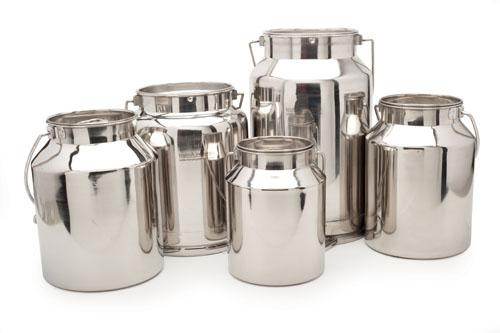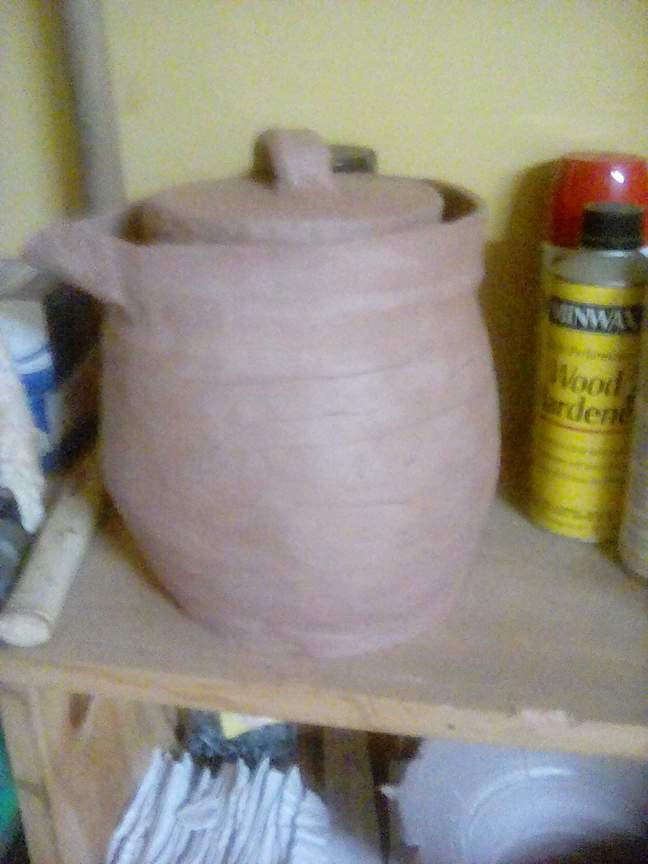

 1
1




Kate Muller wrote:What about something like this for glass storage?
Here is a 2.5 gallon size. with an aluminum screw lid.
http://www.webstaurantstore.com/anchor-hocking-85679-2-5-gallon-barrel-jar-with-brushed-aluminum-lid/55085679.html
They also have a 1 gallon size.
http://www.webstaurantstore.com/anchor-hocking-85728-1-gallon-barrel-jar-with-brushed-aluminum-lid/55085728.html
QuickBooks set up and Bookkeeping for Small Businesses and Farms - jocelyncampbell.com






 1
1




Bill Crim wrote: It seems like the grain storage problem has already been handled by the local grain elevator, and doesn't really benefit by home storage methods. Flour also seems like a problem that is best solved by the mill. Is there a reason why you want to store more than a month worth of dry grain or flour? Am I missing part of the goal? Or is experimenting with different preservation techniques the goal?

QuickBooks set up and Bookkeeping for Small Businesses and Farms - jocelyncampbell.com




Jocelyn Campbell wrote:
We do not yet have a mill. Wanna buy us one?
There are multiple reasons to buy more than a month's worth of flour (when one doesn't own a mill):
a.) buying in bulk saves money
b.) it creates a "deep pantry" for resilience, preparedness
c.) it saves time/creates efficiency in our food shopping - especially when we live 35+ minutes from organic food sources
d.) stocking up helps us prepare ahead of time for events or feeding for large groups.
Maybe I've missed a couple more. Anyone else have another reason?
Welcome to Permies!
A Universal Welcome
Find your way around here





Flour's a hard one as 'real' flour with the wheat germ mixed in goes rancid fairly quickly, and the white stuff doesn't have a lot going on.Penny Dumelie wrote: Since the price of everything edible continues to rise, buying in bulk now prevents paying higher prices later





Owner, Etta Place Cider






 1
1




Ann Torrence wrote:Jocelyn,
I saw these stainless steel milk totes today and thought of you. 1, 2 and 3 gallon sizes.

QuickBooks set up and Bookkeeping for Small Businesses and Farms - jocelyncampbell.com










Penny Dumelie wrote:
Since the price of everything edible continues to rise, buying in bulk now prevents paying higher prices later.
Obviously there will be some exceptions but overall, the price of food isn't going to get any cheaper.
QuickBooks set up and Bookkeeping for Small Businesses and Farms - jocelyncampbell.com






 1
1




Leila Rich wrote:Flour's a hard one as 'real' flour with the wheat germ mixed in goes rancid fairly quickly, and the white stuff doesn't have a lot going on.
Hang on, I'm easily confused-you guys were talking about storing flour rather than whole wheat, right?
QuickBooks set up and Bookkeeping for Small Businesses and Farms - jocelyncampbell.com
 2
2









Leila Rich wrote:
Flour's a hard one as 'real' flour with the wheat germ mixed in goes rancid fairly quickly, and the white stuff doesn't have a lot going on.Penny Dumelie wrote:buying in bulk now prevents paying higher prices later
Hang on, I'm easily confused-you guys were talking about storing flour rather than whole wheat, right?
Jocelyn Campbell wrote: we do not have a mill, so we are looking at buying and storing flour (...) Hence all the talk previously in the thread






 3
3




"You must be the change you want to see in the world." "First they ignore you, then they laugh at you, then they fight you, then you win." --Mahatma Gandhi
"Preach the Gospel always, and if necessary, use words." --Francis of Assisi.
"Family farms work when the whole family works the farm." -- Adam Klaus






 2
2





QuickBooks set up and Bookkeeping for Small Businesses and Farms - jocelyncampbell.com




Jocelyn Campbell wrote:
We have some food-grade, used 55-gallon barrels around that used to have either pear juice (removable lids) or molasses (no lid yet, just a spout) in them. So we might re-work those for some food storage. (Actually, we had used one barrel to temporarily store pork we butchered in September.) Though they do seem to have some kind of lining in them which raises the eyebrows and they sorta tend to get used up for RMH and other projects around here, too.
My project thread
Agriculture collects solar energy two-dimensionally; but silviculture collects it three dimensionally.






 1
1




Cj Verde wrote:Oh, I thought he meant plastic 55 gallon barrels - like the blue plastic kind. How do you know metals ones are food grade or not?
QuickBooks set up and Bookkeeping for Small Businesses and Farms - jocelyncampbell.com




Marianne
check us out @ www.cricketscove.net
 2
2




Sam Barber wrote:
...
Another option that was discussed was using a stainless steel 55 gallon drum and putting the sacks of various grains into the drum with the tops cut open so that you could easily access any of the bulk contents easily and then seal it up again and if you put a non toxic candle into the barrel you could light the candle in the barrel every time you open it. I was also thinking about modifying the barrel to put a one way air valve in it so it could be vacuumed sealed easily. I was thinking the same thing for mid sized storage (think 5 gallons) except modifying a stainless stock pot with a one way valve.
...










 1
1




QuickBooks set up and Bookkeeping for Small Businesses and Farms - jocelyncampbell.com

 8
8




Works at a residential alternative high school in the Himalayas SECMOL.org . "Back home" is Cape Cod, E Coast USA.






 1
1




QuickBooks set up and Bookkeeping for Small Businesses and Farms - jocelyncampbell.com




Jocelyn Campbell wrote:
Tom, that vacuum implosion was intense!





 2
2




Jocelyn Campbell wrote:Wow, what a way to stack functions, Rebecca! Thanks for sharing those awesome photos. Is this grain for the residential high school community, and if so, about how many people? It sounds like you go might through it fast enough to prevent rancidity despite the south facing warmth. This kind of example could really help us here in our planning.
Works at a residential alternative high school in the Himalayas SECMOL.org . "Back home" is Cape Cod, E Coast USA.











QuickBooks set up and Bookkeeping for Small Businesses and Farms - jocelyncampbell.com




 1
1




 2
2




'Theoretically this level of creeping Orwellian dynamics should ramp up our awareness, but what happens instead is that each alert becomes less and less effective because we're incredibly stupid.' - Jerry Holkins
 2
2




 1
1




'Theoretically this level of creeping Orwellian dynamics should ramp up our awareness, but what happens instead is that each alert becomes less and less effective because we're incredibly stupid.' - Jerry Holkins
























Jocelyn Campbell wrote:
I'd rather avoid the hand warmer chemicals, too.
Permaculture, Tiny House Living, Homesteading
http://www.canadianrenegade.com
 1
1




 1
1




 1
1





No rain, no rainbow.
 1
1




Jocelyn Campbell wrote:This 2.5 gallon jar (Amazon affiliate link again) says it has an air-tight seal with a metal lid though it costs almost 3 times as much.
Jackie
~ Be the change!

|
Even monkeys fall from trees. I brought you an ice pack tiny ad.
The new kickstarter is now live!
https://www.kickstarter.com/projects/paulwheaton/garden-cards
|







